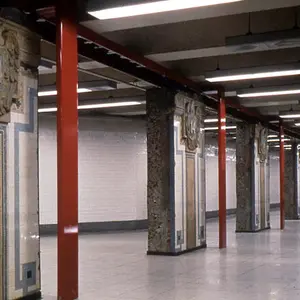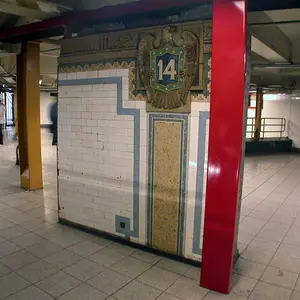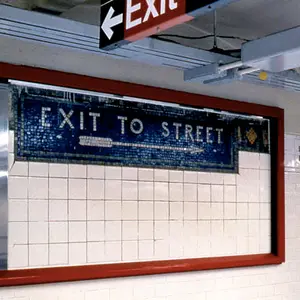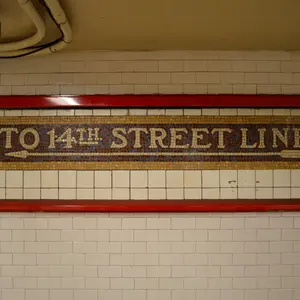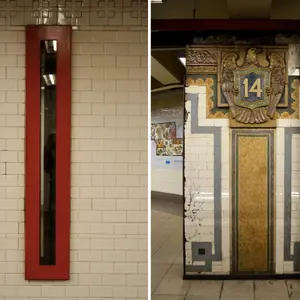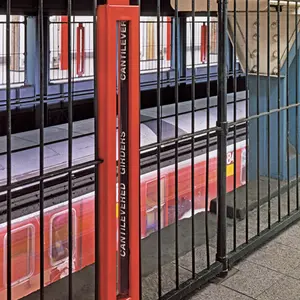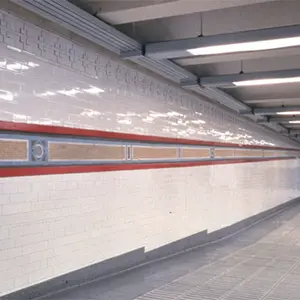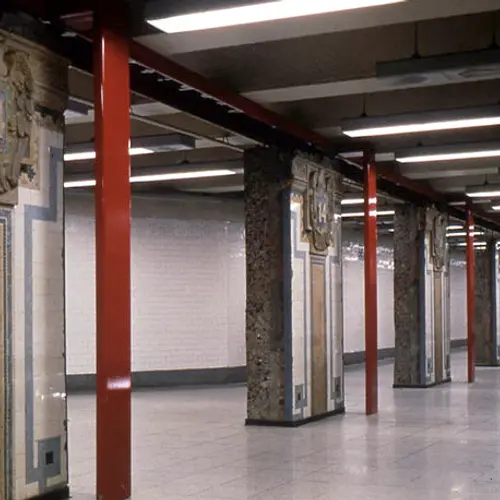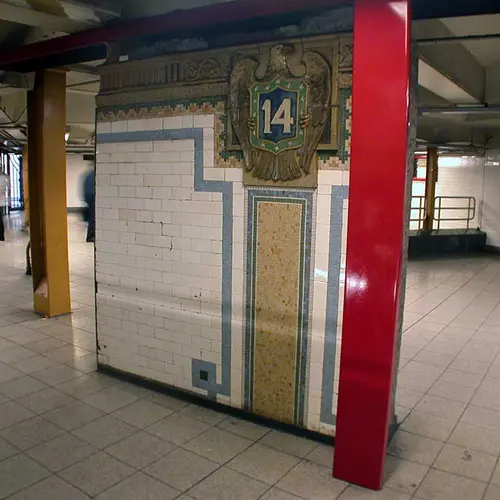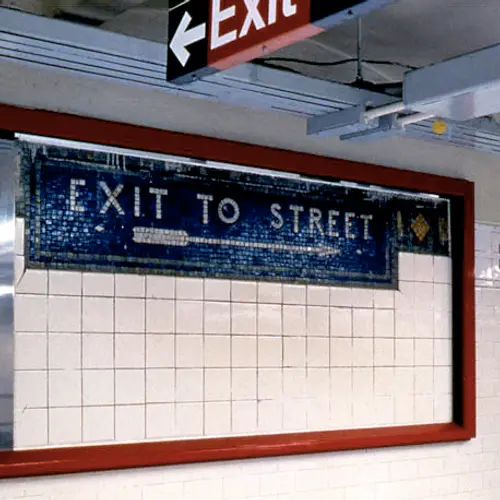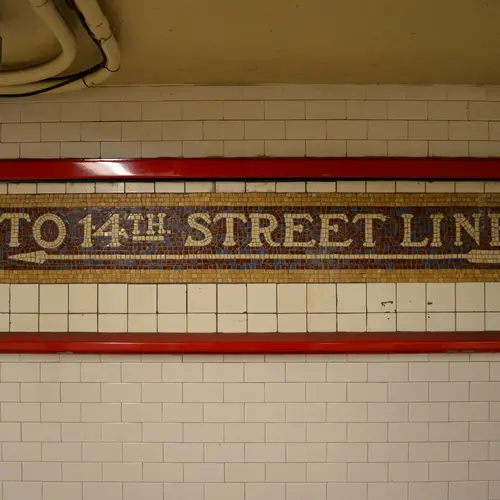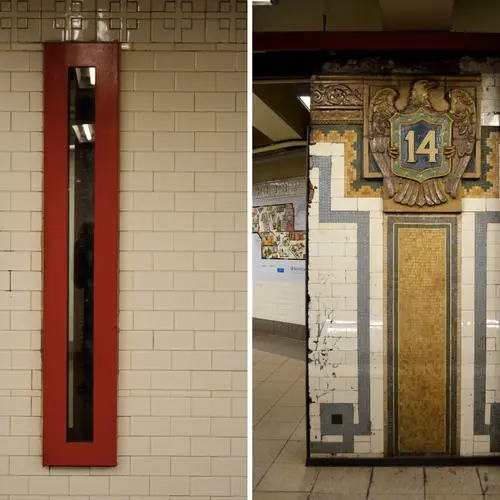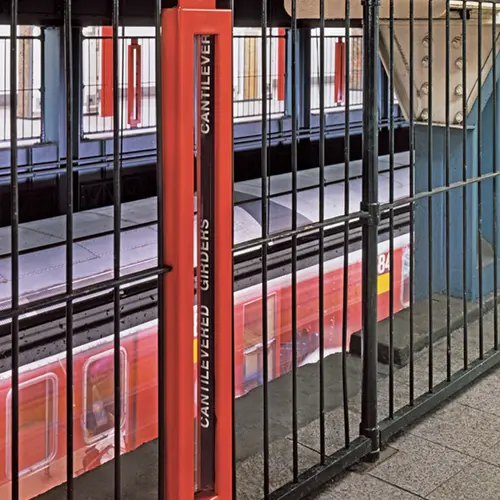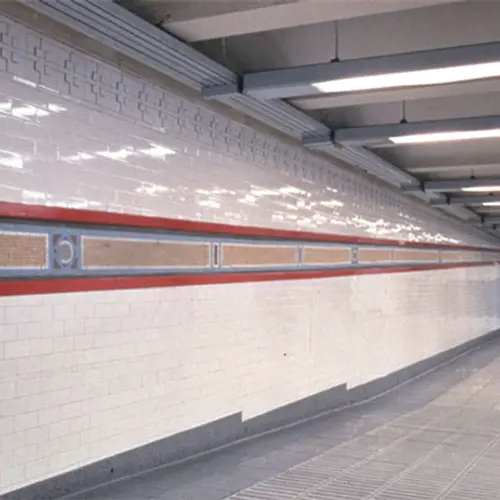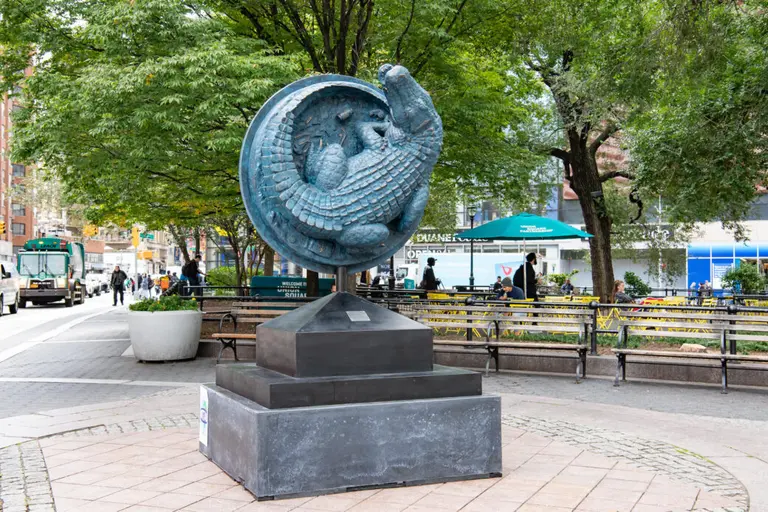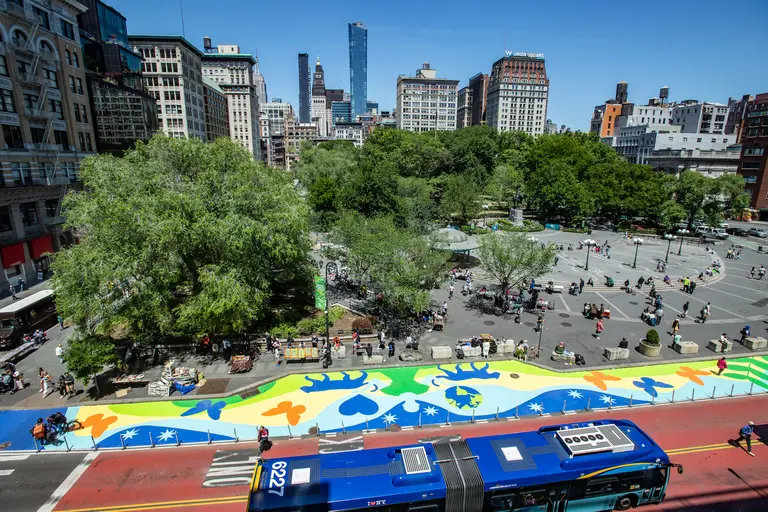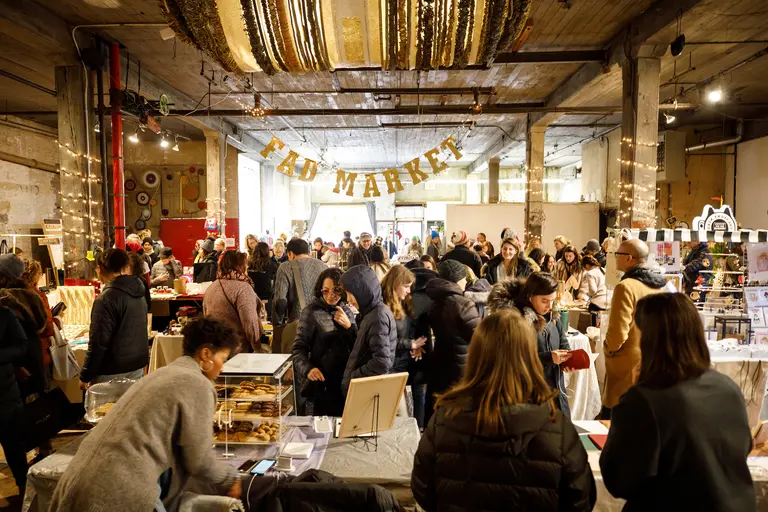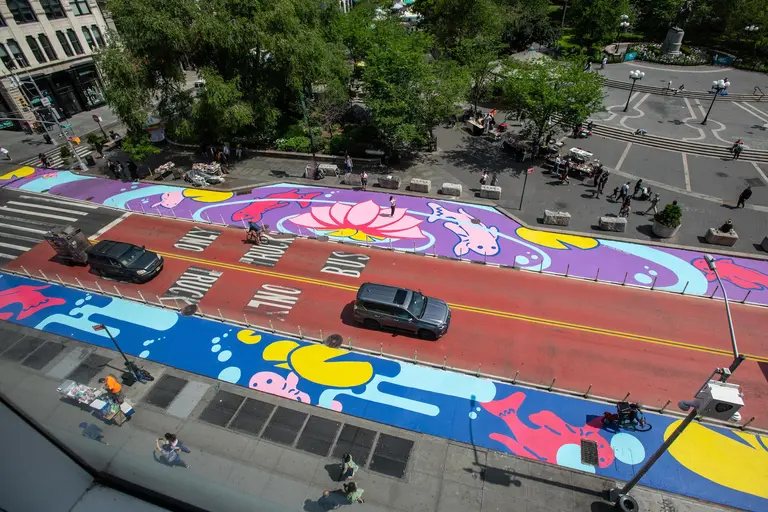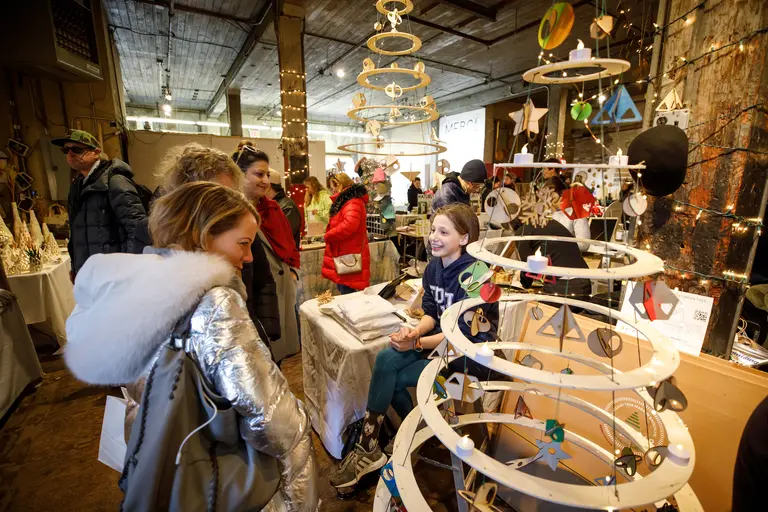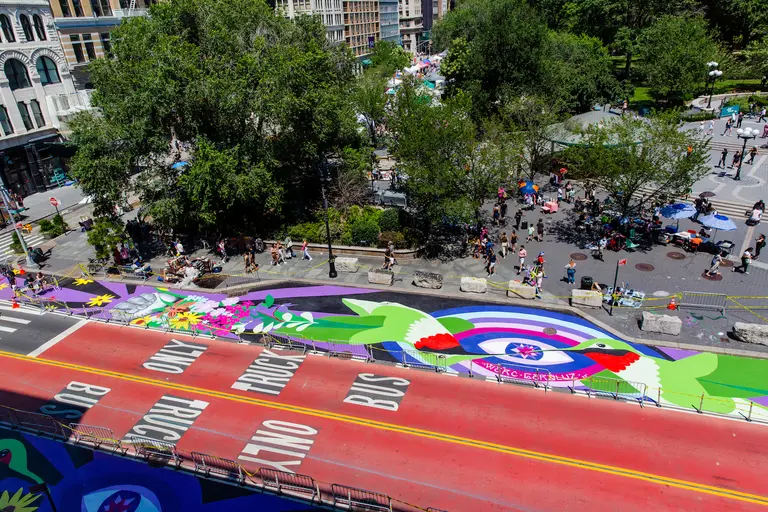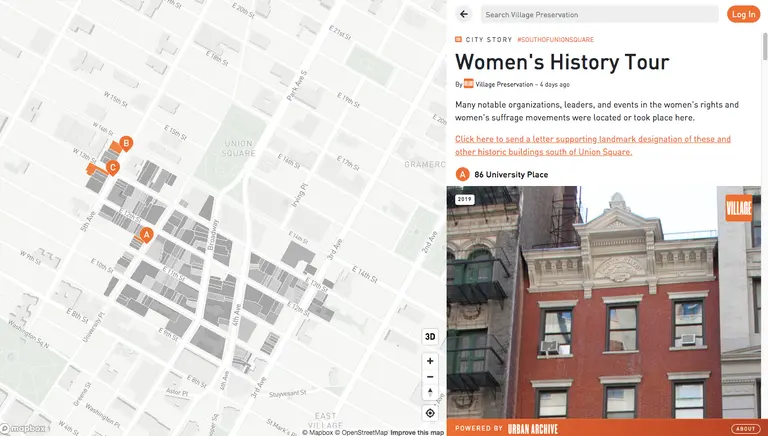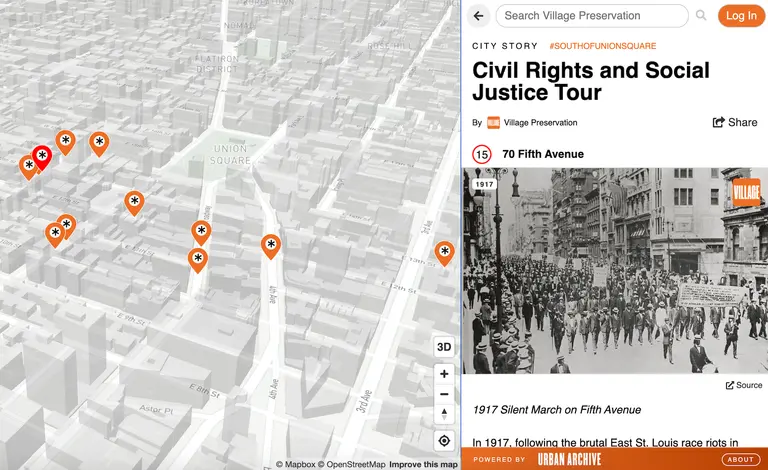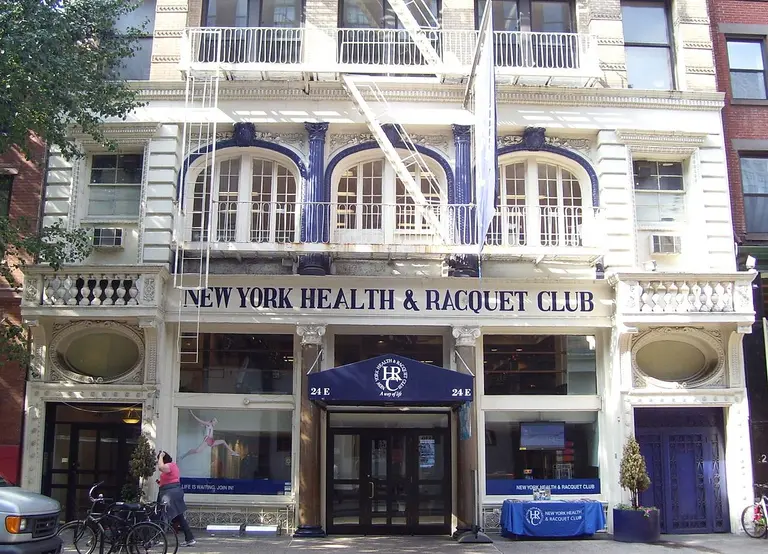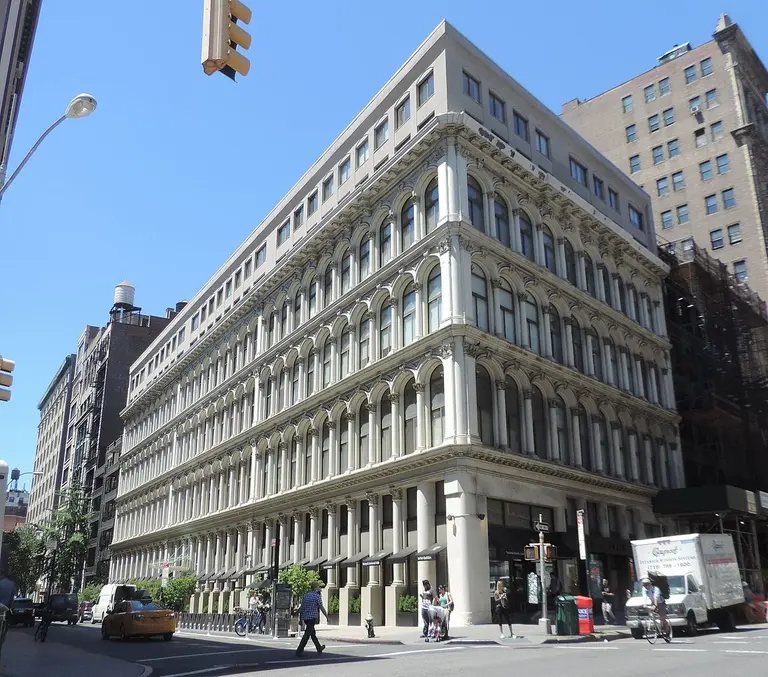What’s the Meaning Behind Those Peculiar Red Frames Found in Union Square Station?
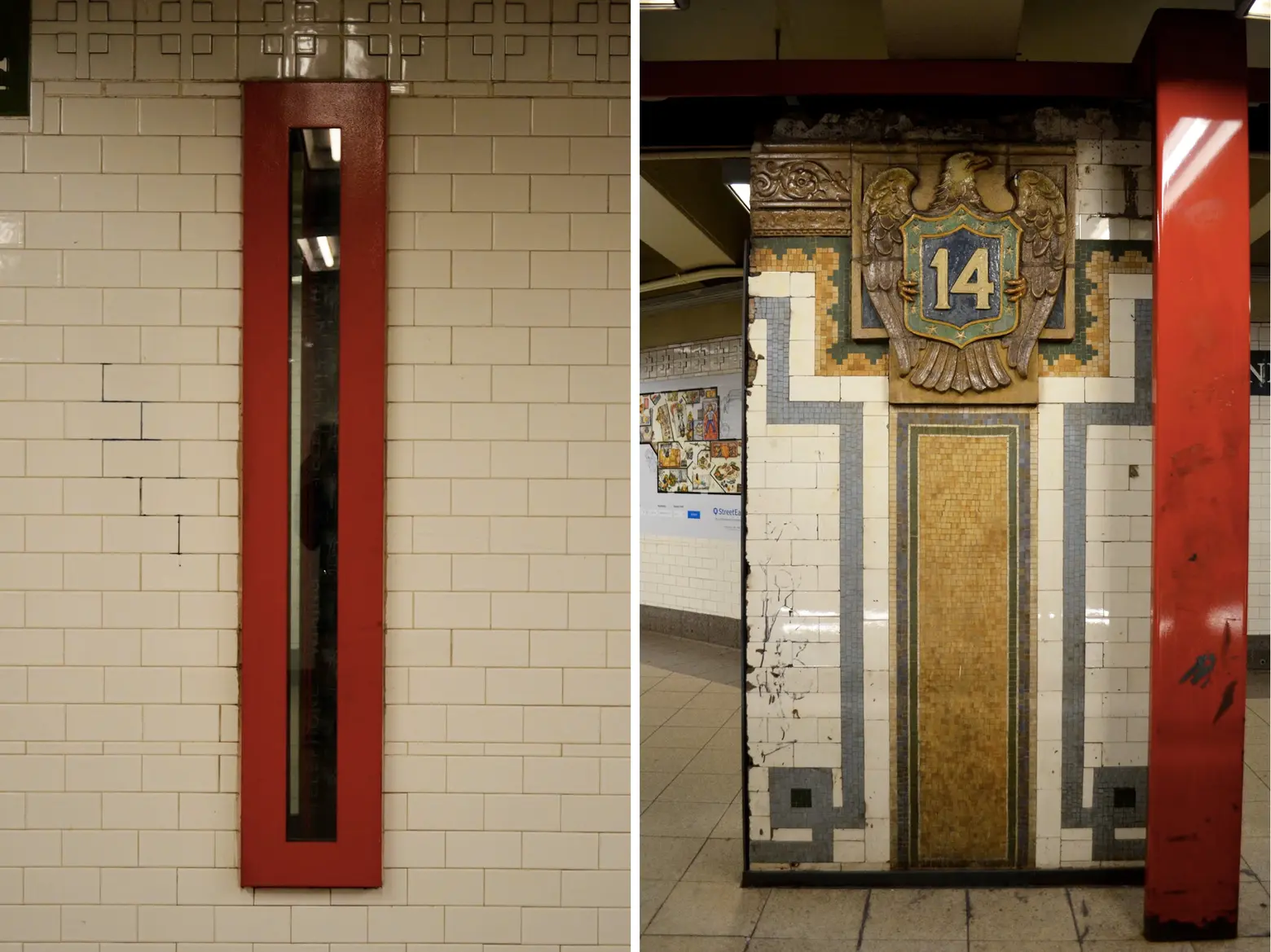
Images by This Hidden City
You’ve surely walked past these bright red frames beneath 14th Street-Union Square numerous times, but probably haven’t given much thought to why they are there—or if you have, you’ve likely just assumed they were another one of the city’s unfinished construction projects. But as it turns out, these seemingly simplistic outlines hold great significance, each piece pointing to a very special time in New York’s transportation history.
The frames are part of an art project implemented in 1998 called “Framing Union Square.” Artist Mary Miss (with the help of architect Lee Harris Pomeroy) was commissioned to create an installation that would pay tribute to the old Union Square hub of 1904, one of the city’s original 28 subway stations.
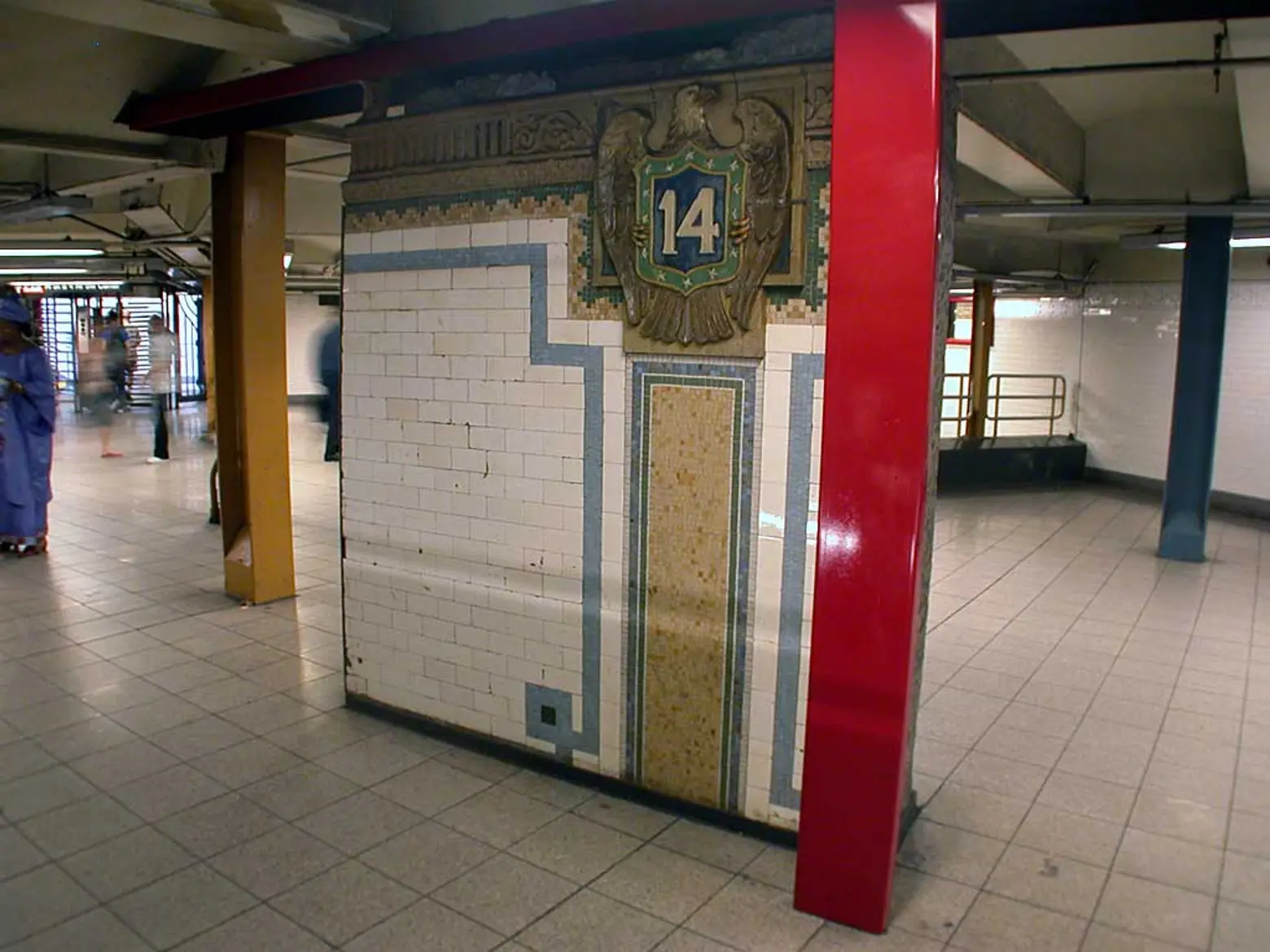 One of the six sections of wall recovered from the original stations Image © Josh Lubchansky
One of the six sections of wall recovered from the original stations Image © Josh Lubchansky
Throughout the subway complex you’ll find these red markers pointing out various relics of the station’s first life, ranging from decaying mosaics to rusted steelwork to even telephone wiring. But the most noteworthy remnants might be the decorative features that used to adorn the interior, namely the six terra cotta eagles found clutching the number 14. All of the pieces were uncovered during one of Union Square’s past renovations, and prior to their rediscovery, most had been presumed to be lost.
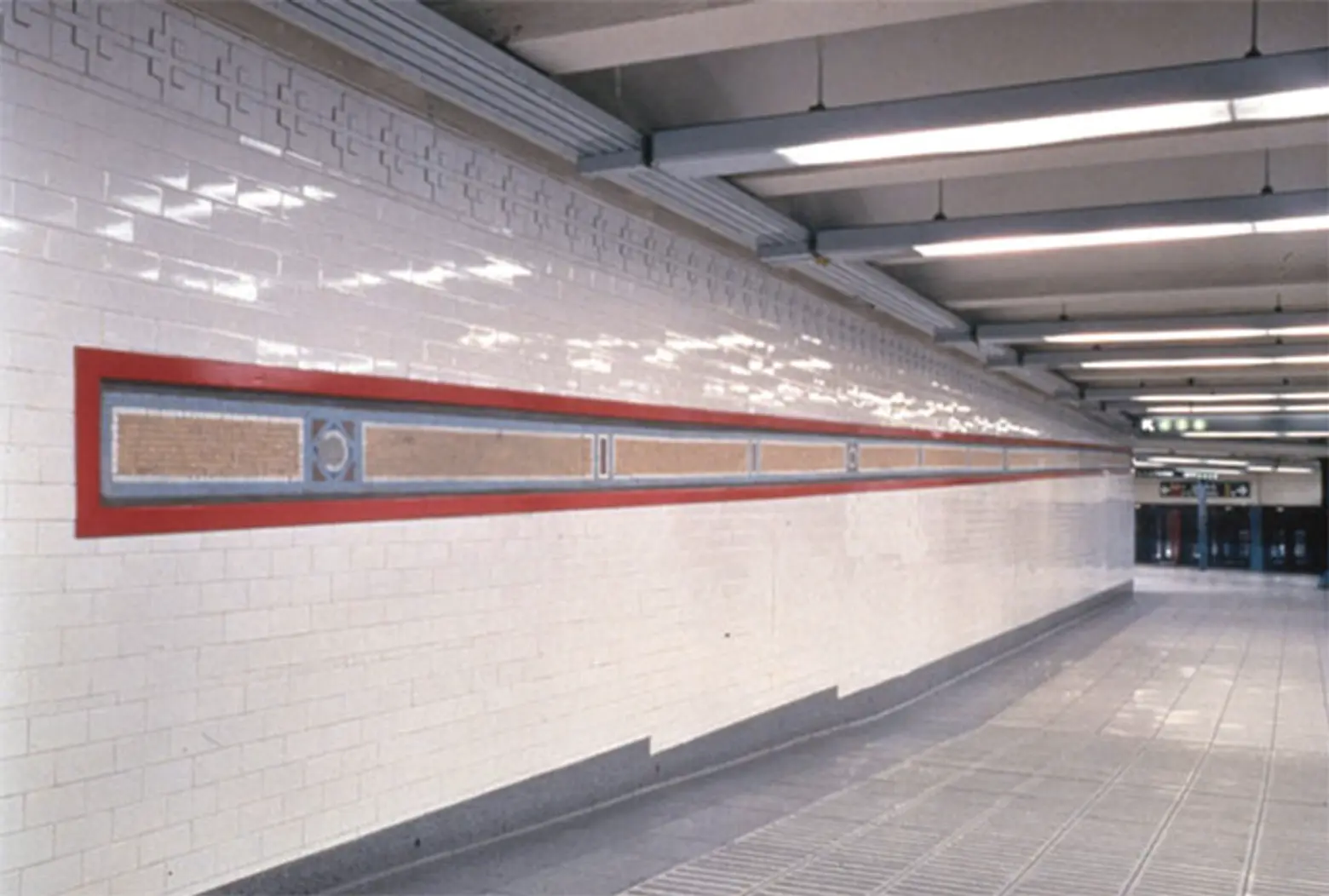
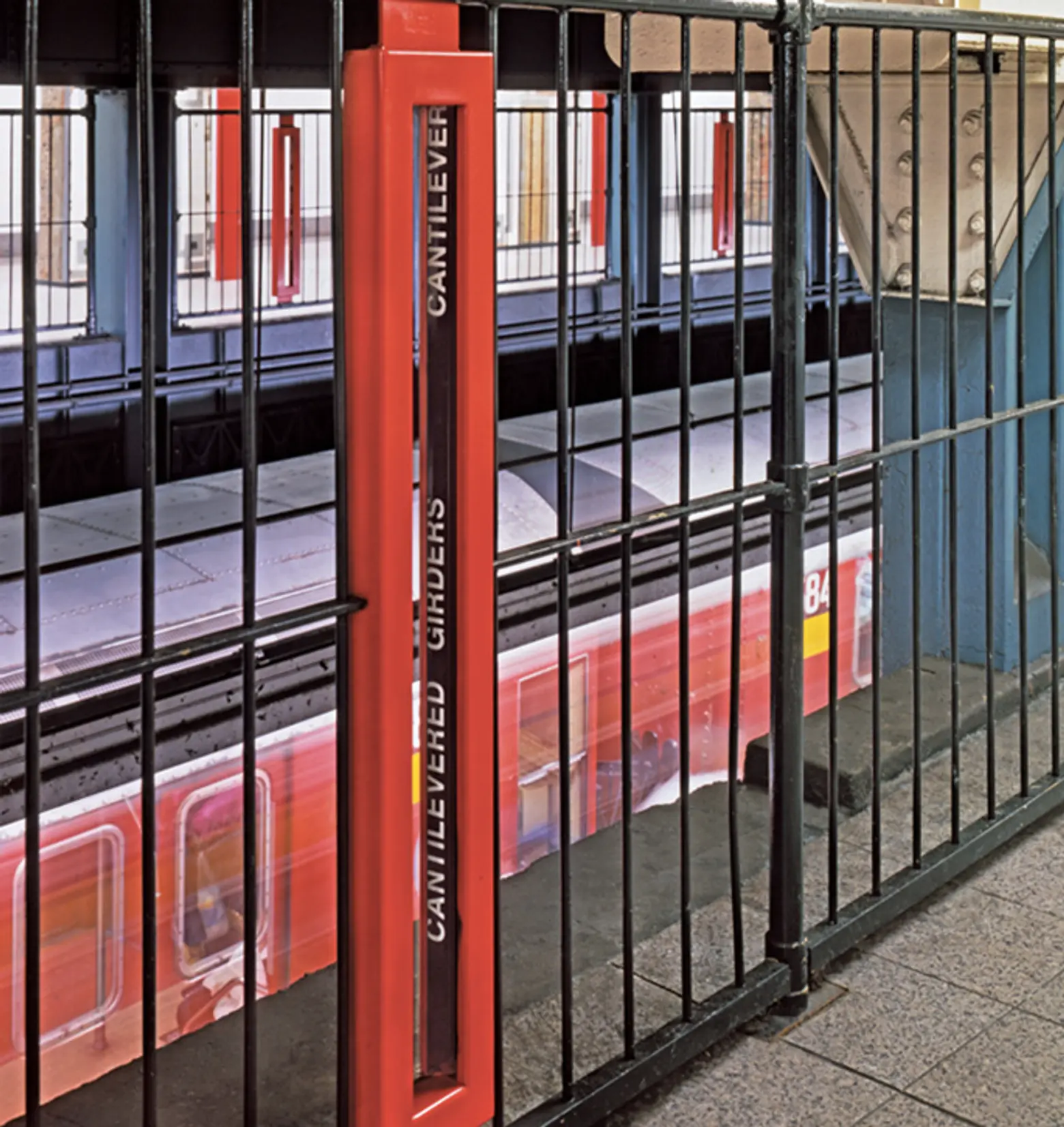
With 115 frames distributed throughout the 14th Street complex, it’s virtually impossible not to encounter one. With that said, next time you find yourself meandering through the station–or cursing your delayed train–take a moment to, as Mary Miss says, “look below the surface to see a ‘slice’ of the station, its structure, [and] its history.”
[Via This Hidden City and MTA Info]
RELATED:
- NYC’s First Subway Line Moved Passengers Just One Block–Can You Guess Which?
- The NYC Subway Still Runs on 1930s Technology, Pen and Paper
- The Subway That Could Have Been: Mapping Never-Built Train Lines and Abandoned Stations
